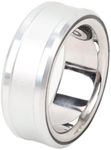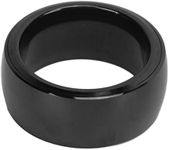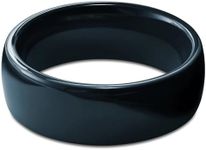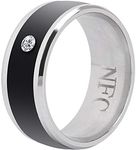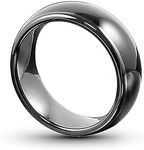Buying Guide for the Best Smart Rings
Smart rings are wearable devices that fit on your finger and offer a range of features, from health tracking to notifications. When choosing a smart ring, it's important to think about what you want to use it for—whether it's monitoring your health, staying connected, or something else. Understanding the main features and how they relate to your lifestyle will help you pick the best smart ring for your needs.Battery LifeBattery life refers to how long the smart ring can operate before needing to be recharged. This is important because it affects how often you'll need to take the ring off and charge it, which can impact your experience, especially if you want to track your health or sleep continuously. Battery life can range from a couple of days to a week or more. If you want to wear your ring all the time, especially for sleep tracking, look for longer battery life. If you don't mind charging it more often, shorter battery life might be acceptable.
Health and Fitness TrackingThis spec covers the ring's ability to monitor things like heart rate, sleep, steps, and sometimes even blood oxygen or temperature. It's important because it determines what kind of health information you'll get. Some rings focus on basic activity tracking, while others offer advanced health insights. If you're interested in detailed health data, look for rings with more sensors and features. If you just want simple activity tracking, a basic model will do.
Water ResistanceWater resistance tells you how well the ring can handle exposure to water, such as hand washing, showering, or swimming. This is important if you plan to wear the ring all day, including during activities where it might get wet. Water resistance is usually rated by depth (like 50 meters) or by terms like 'splash-proof.' If you want to swim or shower with your ring, look for higher water resistance. If you'll only wear it in dry conditions, this may be less important.
Comfort and FitComfort and fit refer to how the ring feels on your finger and whether it comes in the right size for you. This is crucial because you'll likely wear the ring for long periods. Rings come in different sizes and shapes, and some offer sizing kits to help you find the best fit. If you have sensitive skin or are not used to wearing rings, look for lightweight and hypoallergenic materials. Make sure you can get the right size for your finger to avoid discomfort.
Connectivity and CompatibilityThis spec describes how the ring connects to your phone or other devices, usually via Bluetooth, and which operating systems (like iOS or Android) it supports. It's important because you'll need to sync your data and use the ring's app. Some rings work with both major phone types, while others may only support one. Make sure the ring is compatible with your phone and that the app offers the features you want.
Notifications and Smart FeaturesSome smart rings can alert you to calls, messages, or other notifications by vibrating or lighting up. This is useful if you want to stay connected without checking your phone all the time. The level of smart features varies—some rings focus only on health, while others offer more connectivity. If you want to use your ring for notifications, check what types are supported and how they are delivered. If you only care about health tracking, you may not need these features.
Durability and Build QualityDurability and build quality refer to how well the ring is made and how it stands up to daily wear and tear. This is important because the ring will be exposed to bumps, scratches, and possibly chemicals. Materials like titanium, stainless steel, or ceramic are more durable, while plastic may be less so. If you lead an active lifestyle or work with your hands, look for a ring made from tough materials.



